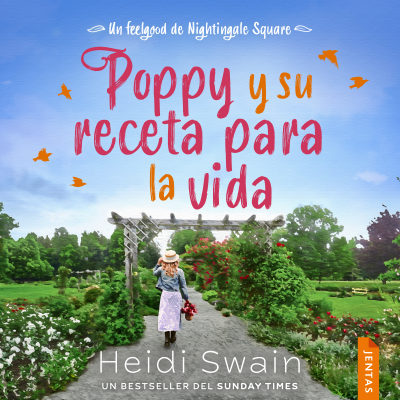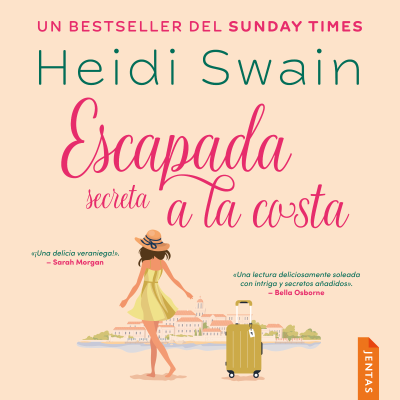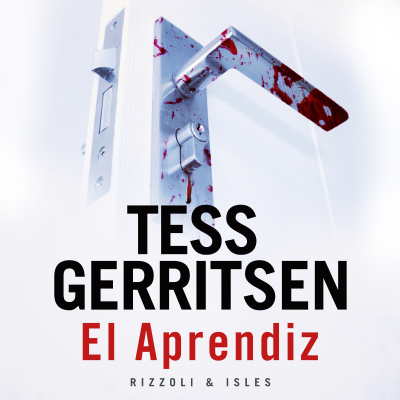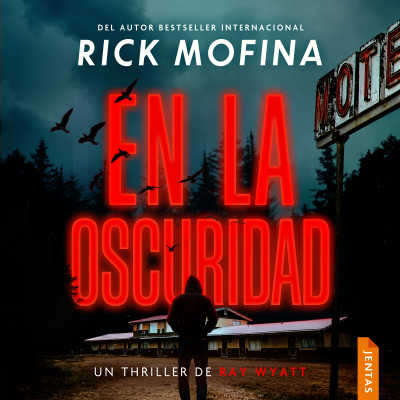
Revolution Harmony
inglés
Cultura y ocio
Disfruta 30 días gratis
4,99 € / mes después de la prueba.Cancela cuando quieras.
- 20 horas de audiolibros / mes
- Podcasts solo en Podimo
- Podcast gratuitos
Acerca de Revolution Harmony
Welcome to the unorthodoX thoughts of multi award-winning music lecturer Ray Harmony (older episodes were co-hosted by Kate Harmony, his wife and protégé). As a songwriter and producer, Ray has made music with Grammy winners and multiplatinum artists, including Serj Tankian (System Of A Down) and Tom Morello (Rage Against The Machine). This space is like a songwriters' ark, where all the music making skills are being preserved through this global AI flood. The flood shall pass. The skills will last. Join over 250,000 YouTube subscribers learning the fast, easy, and fun way to make music without using AI, cos it ain't no fun getting a robot to write “your” songs! Download Ray's free book @ HackMusicTheory.com
Todos los episodios
693 episodiosDon’t Lie! You Listen to AI Songs.
DON’T LIE! YOU LISTEN TO AI SONGS. There’s no way to avoid them, unless you do this… I’ve been speaking out against AI-generated music for a while now, but people keep telling me (proudly) that they don’t listen to songs made by AI. They also keep telling me (proudly) that AI songs are crap. Sadly, the only thing these comments tell me is that those people don’t understand that AI has a hidden presence in music. It doesn’t matter if you listen to jazz or classical or world or whatever genre (or artist) you think is not using AI, if it’s new music, they’re probably using AI. But not in the way you think. They’re not prompting it to make their whole album. That type of AI usage is relatively easy to spot. For now. Mark my words, though, before the end of 2026, it will be indistinguishable from the real thing. But we’ll cross that bridge when we get there. In the meantime, here’s what you need to know. Subscribe to get the latest posts in your inbox [https://rayharmony.substack.com/subscribe]. Almost all music makers are using AI. Some are proud of it, some are not. The ones who are not proud of it, are using it in secret. Sometimes they only use it to come up with an idea, sometimes to help them finish a melody they’re struggling with, sometimes to write a whole chorus, and yes, sometimes to write a whole song. You’ll never know, because it’s being used in the writing process, and that’s always carried out behind closed doors. In secret. So even if the band records their new album live, you have no way of knowing if AI was used in the writing process. If you want to know all the ways that songwriters and producers are using AI in music, watch the YouTube video titled The AI Music Race is Over by the brilliant Rick Beato. Also, there’s an essay of mine titled AI Is Killing Music! This Is How We Save It. [https://hackmusictheory.com/home/blog/7622281/ai-is-killing-music-this-is-how-we-save-it], which offers a method for artists to write new songs and guarantee their fans that they’re 100% human-made, so check that out too. Now, here’s the takeaway message from this essay: If you listen to new music, you’re listening to AI. And yes, you guessed it, the only way to be guaranteed that you’re listening to 100% human-made songs is to listen to older recordings (from before AI was commercially available). In other words, albums from before the 2020s. One of my favourite collections of 100% human-made music is the MTV Unplugged series from the ‘90s. Oh man, it does not get more real than that! These recordings are infinitely more valuable than diamonds. Cherish them, please. Alice in Chains is probably my favourite one in the series, but Pearl Jam is a close second. These albums still give me goosebumps 30 years later. That’s human magic. AI will never be able to do that. AI can’t express the human experience. AI cannot ever be in the same category as Layne Staley. Subscribe to get the latest posts in your inbox [https://rayharmony.substack.com/subscribe]. Right, now go and listen to the Alice in Chains “Unplugged” album, and be prepared for your spine to tingle, as you’re about to be touched by true human magic. Just before you go, though. If you’re interested in learning how to make magic yourself, or if you’re already making magic but want to improve, then I invite you to help yourself to the many free downloads here. If you’re a beginner, start with my FREE BOOK [https://rayharmony.substack.com/about] 12 Music Theory Hacks to Learn Scales & Chords. It only takes about half an hour to read, then you’ll have a solid foundation of the basics. And if you’re intermediate or advanced, download the Free PDF Tutorials [https://hackmusictheory.com/tutorials], which teach you how to make great music in all different genres. And lastly, I don’t paywall any of these essays, as I don’t want to exclude anyone. So if you can spare a few bucks, please consider becoming a paid subscriber. It’s only about the cost of one coffee per month for you, but if enough people join, then I can pay the rent and keep helping you every week. So if you’d like to see my work continue, head on over to HackMusicTheory.com/Join [https://hackmusictheory.com/join]. A heartfelt thank-you for being here. And welcome aboard the Songwriter’s Ark, where all the music making skills are being preserved through this global AI flood. The flood shall pass. The skills will last. Ray Harmony :) ---------------------------------------- DONATE. Help keep the Songwriter's Ark afloat [https://hackmusictheory.com/join]. [https://lh7-rt.googleusercontent.com/docsz/AD_4nXcfJLf-E08kl2XRn5nHpb-Nc_iPEffyLR7Yt6bV9gHxE4C8wKhFCPYgXk1ciyN7nutOdhug3obTbw9e5x2v1evIgw5nnTBgp6U9S1lQmoYZkWuM0qGo6Cj4dlGe3kU9vW_4fHP3?key=xaUIfXiL9neOSZAizVCeXA]https://hackmusictheory.com/join Photo by Mart Production ---------------------------------------- ABOUT. Ray Harmony is a multi award-winning music lecturer, who’s made music with Serj Tankian (System Of A Down), Tom Morello (Rage Against The Machine), Steven Wilson (Porcupine Tree), Devin Townsend (Strapping Young Lad), Ihsahn (Emperor), Kool Keith (Ultramagnetic MCs), Madchild (Swollen Members), and more. Ray is also the founder of Hack Music Theory, a YouTube channel with over 10 million views and over 250,000 subscribers learning the fast, easy and fun way to make music without using AI, cos it ain’t no fun getting a robot to write “your” songs! [//d10j3mvrs1suex.cloudfront.net/s:bzglfiles/u/64207/3840381b3b5a50db9a8e12c2beb0fa7129517d34/original/image.jpeg] Photo by Ayşe İpek Outro music by Ray Harmony, based on the music theory from GoGo Penguin "Everything Is Going to Be OK" [https://hackmusictheory.com/blogs/theory/posts/7208821/how-to-write-a-bass-line-with-harmony-music-theory-from-gogo-penguin-everything-is-going-to-be-ok]. ---------------------------------------- PODCAST. Listen below, or on any podcast app.
Music Is Dead. Good Riddance!
MUSIC IS DEAD. GOOD RIDDANCE! AI killed the recording star. Now what? Have you heard AI-generated music? It’s better than most of the music that humans are making nowadays. Even worse than that, though, is the fact that music generated by machines ironically sounds more human than most music made by people. But that’s nothing new. There’s been a dehumanizing trend in music ever since the drum machine became popular in the 1980s. That trend was turbocharged by the invention of Auto-Tune in the late ‘90s. Remember that awful hit-single from ‘98 with the robot-style singing? Yeah, you know the one. Well, that song kicked off the penultimate chapter of this dehumanizing story of music. So it’s important to remember that decades before AI-generated music began to flood the airwaves, human-made music was already beginning to sound like it was being generated by robots. Now I’ll be honest with you, I do love a good conspiracy theory! And to my mind, the inverse correlation between human-made music becoming increasingly robotic-sounding (i.e. less human), while robot-generated music became increasingly human-sounding (i.e. more human), is rather suspicious in light of the transhumanism agenda. Just saying. Anyway, moving along… Subscribe to get the latest posts in your inbox [https://rayharmony.substack.com/subscribe]. With the vast majority of people embracing AI-generated music, it’s safe to say that human-made music is dying out rapidly. In fact, I’d argue that it’s already dead, because there’s no way to know if AI was used in the making of a song. Even if a song was recorded live, AI could have been used in the writing process. Either way, based on the current definition of music, it’s pretty much dead. That definition has changed numerous times, though, but if you want to know that story, read my essay AI Can’t Make Music. The last definition change, which is not much older than a hundred years, brainwashed most people into believing that recordings were music. But they’re not. Music is music, and recordings of music are just that: recordings of music. Two totally different things. It’s the same with videos. If you watch a video of someone talking, that’s not a person talking, that’s a video recording of a person talking. Two totally different things. But now with AI-generated music, it’s not even a recording. So the way we’ve previously been brainwashed into thinking of music as recordings is outdated. AI has killed the recording star. And there’s a brand new definition of music spreading through the mainstream consciousness. Music is now something AI generates within seconds, based on a prompt. And it won’t take long for prompts to be obsolete, too. So, music as we know it is dead. But you know what? Good riddance, as music was already transhuman decades ago. It’s time to take it back. Let’s rehumanize music! Subscribe to get the latest posts in your inbox [https://rayharmony.substack.com/subscribe]. From the ashes, music is reborn. New. Untainted. This rebirth is an invitation to redefine. What is music to you? And what is its purpose in your life? Please think about these two questions. And answer them. Your answers matter. A lot! So we’re not mourning music here, we’re celebrating its rehumanization and our own personal redefinition. How exciting is that?! I’ll share my answers as an example, but don’t use mine, as they almost certainly won’t be right for you. Okay, so what is music? For me, music has become my medicine. I play music to change the way I feel. If I’m feeling anxious, I listen to Palestrina. That calms me. If I’m feeling drained, I listen to Mozart. That energizes me. If I’m feeling down, I listen to Haydn. That uplifts me. If I’m feeling unimaginative, I listen to Bach. That inspires me. In fact, I’m listening to Bach as I write these words. I always listen to Bach while writing each week’s essay. I rely on Bach. If he didn’t turn up for work every day, I don’t think I’d get much written. He gets my creative juices flowing, and then sustains them and keeps me focused. So my music library is now my medicine cabinet. There’s a recording in there for every issue. I only recently realized that’s what I’d been unconsciously doing for a while. Since this realization, though, I’ve been intentional about what I listen to and consciously aware of how it makes me feel. As a result, I’m able to navigate each day far better. And that’s all thanks to my new definition of music, and its purpose in my life. Subscribe to get the latest posts in your inbox [https://rayharmony.substack.com/subscribe]. On that note. I now invite you to redefine music for yourself, as well as deciding what its purpose is in your life. If you feel like sharing your two answers, please write a comment, as I’d love to know what music means to you. And if you’re interested in learning how to make music yourself, or if you’re already making music but want to improve, then I invite you to visit my website and help yourself to the many free downloads. If you’re a beginner, start with my FREE BOOK [https://rayharmony.substack.com/about] 12 Music Theory Hacks to Learn Scales & Chords. It only takes about half an hour to read, then you’ll have a solid foundation of the basics. And if you’re intermediate or advanced, download the Free PDF Tutorials [https://hackmusictheory.com/tutorials], which teach you how to make great music in all genres. Lastly, I don’t paywall any of these posts, as I don’t want to exclude anyone. So if you can spare a few bucks, please consider becoming a paid subscriber. It’s only about the cost of one coffee per month for you, but if enough people join, then I can pay the rent and keep helping you every week. So if you’d like my work to continue, head on over to HackMusicTheory.com/Join [https://hackmusictheory.com/join]. A heartfelt thank-you for being here. And welcome aboard the Songwriter’s Ark, where all the music making skills are being preserved through this global AI flood. The flood shall pass. The skills will last. Ray Harmony :) ---------------------------------------- DONATE. Help keep the Songwriter's Ark afloat [https://hackmusictheory.com/join]. [https://lh7-rt.googleusercontent.com/docsz/AD_4nXcfJLf-E08kl2XRn5nHpb-Nc_iPEffyLR7Yt6bV9gHxE4C8wKhFCPYgXk1ciyN7nutOdhug3obTbw9e5x2v1evIgw5nnTBgp6U9S1lQmoYZkWuM0qGo6Cj4dlGe3kU9vW_4fHP3?key=xaUIfXiL9neOSZAizVCeXA]https://hackmusictheory.com/join Photo by Mart Production ---------------------------------------- ABOUT. Ray Harmony is a multi award-winning music lecturer, who’s made music with Serj Tankian (System Of A Down), Tom Morello (Rage Against The Machine), Steven Wilson (Porcupine Tree), Devin Townsend (Strapping Young Lad), Ihsahn (Emperor), Kool Keith (Ultramagnetic MCs), Madchild (Swollen Members), and more. Ray is also the founder of Hack Music Theory, a YouTube channel with over 10 million views and over 250,000 subscribers learning the fast, easy and fun way to make music without using AI, cos it ain’t no fun getting a robot to write “your” songs! [//d10j3mvrs1suex.cloudfront.net/s:bzglfiles/u/64207/00cbf90212ae99957667352ca861936e417fdb4f/original/image.jpeg] Photo by cottonbro studio Outro music by Ray Harmony, based on the music theory from GoGo Penguin "Everything Is Going to Be OK" [https://hackmusictheory.com/blogs/theory/posts/7208821/how-to-write-a-bass-line-with-harmony-music-theory-from-gogo-penguin-everything-is-going-to-be-ok]. ---------------------------------------- PODCAST. Listen below, or on any podcast app.
You vs Phone. Who Will Win?
YOU VS PHONE. WHO WILL WIN? A musical method to take your attention back! How many seconds can you sit still and focus on your breathing, without your mind wandering? If you’re like most people nowadays, your answer to that question is somewhere under 10 seconds. Seriously. And that’s the “new normal”. Ever since the neolithic revolution, when humans first began to live in an unnatural way, we’ve had restless minds. Buddhists call this the monkey-mind, but I think we can update that to the scrolling-mind. While short attention spans have been a problem for a long time, the issue has gotten exponentially worse since the invention of smart phones. It’s horrifying how addicted most people are to their phones! And nobody’s talking about this, because it’s the “new normal”. But it’s not normal, and we need to stop pretending that it’s okay to waste our one precious life staring at screens. Nobody on their death bed will ever wish they spent more time scrolling on their phone. Perhaps you’re thinking: What I spend my time doing is my business! On the surface, that sounds fair enough. But when we explore this issue at a deeper level, we realize that phone addiction is not only ruining our lives, it’s ruining our societies, too. When we can’t focus for more than a few seconds, we can’t create anything worthwhile. And you can see where this is heading… Most people are addicted to consuming content on their phones, which means most people can’t focus long enough to create anything. So what happens when there’s a never-ending demand for new content, but there’s nobody to create it. No problem, says AI. Yep, we’re about to enter a new reality where robots are the “creators”, and humans are the consumers. How screwed up is that?! And then, what happens next? Subscribe to get the latest posts in your inbox [https://rayharmony.substack.com/subscribe]. Phone addiction is such a recent phenomenon that we have absolutely no idea what the world will be like after another decade of this. Whatever that future looks like, though, it’s not good. But we’re not there yet! If we all start taking our attention back today, we can avoid that dystopian future. And there’s an easy (and fun!) way to do this, which I’ll share with you next. But first, we need to understand the problem. There are many interwoven causes behind phone addiction, but essentially people are distracting themselves to death. The precise reasons why each person uses their phone to keep themselves distracted is unique to them, and discovering those unconscious reasons is the next step in our healing process. However, we can’t do that without first taking our attention back. There’s a general awareness that we’re struggling to focus nowadays, which is why the internet is flooded with mindfulness practices. And everyone’s trying to sell you their meditation app. But if mindfulness and meditation worked, then why is almost everyone still addicted to their phones? I think it’s because the addiction is too powerful, so people aren’t able to meditate properly. Just because we sit on a cushion and close our eyes for half an hour, doesn’t mean that we’re meditating for half an hour. It’s like going to the gym for 30 minutes but only doing 3 minutes of exercise. The total time is irrelevant. The only time that counts is when we’re actually exercising. Subscribe to get the latest posts in your inbox [https://rayharmony.substack.com/subscribe]. If we’re sitting with our eyes closed while our minds wander for half an hour, that’s not meditating. Every single time our attention strays, we need to bring it back to the breath. That’s exhausting, though, and that’s why most people give up, or don’t even bother trying in the first place. But fear not, because that’s exactly why I created my new meditation app! No I’m just kidding, apps are part of the problem, not the solution. The real solution is Music. Music has a power that nothing else has. Music can focus our minds, and music can heal us. If we surrender to music, mindfulness becomes effortless. What’s unique about music is that when we listen to it, we’re not consuming, we’re communing. To commune is “to share your emotions and feelings with somebody/something without speaking” (according to the Oxford English Dictionary). How deep is that? To share your emotions without speaking! There’s no better description of our relationship with music than that. Communing. When we open ourselves up to music, we’re in a mutually-resonating relationship with it. Without a human, music is nothing more than vibrations in the air. With a human, though, music comes to life. We bring music to life by listening to it, and when music is alive, its life-force energy is within us. And don’t worry, this is not woo-woo speculation. Music has life-changing psychological and physiological effects, which the music therapy field has been scientifically measuring for decades. Subscribe to get the latest posts in your inbox [https://rayharmony.substack.com/subscribe]. So, sometime today, and every day from now on, do the following: Go somewhere private (even if it’s the bathroom), load up a piece of beautiful music, get your earphones in, put your phone on flight mode (that’s essential!), hit play, close your eyes, and surrender to the music. You can listen to whatever you want, as long as it’s mesmerizingly beautiful. I recommend the EP Vivaldi: Stabat Mater by Jakub Józef Orliński. When I listen to this record, I can feel the chemistry in my body changing within seconds, literally. It’s miraculous. Try it for yourself, and expect miracles. The first movement is just under three minutes, so start your communing with just that one track. It’s so beautiful and captivating, though, you’ll struggle to stop after it. Feel free to commune with the second movement, too. But then stop. It’s better to leave yourself wanting more. There are nine movements, and the whole piece is only 18 minutes long, so work your way up to communing with all nine tracks. Do this exercise every day, and it will change your life. There’s no comparison between meditating for 18 minutes and communing with this music for 18 minutes. Music is a force of nature. Let it move you. Let it change you. But remember, this is communing, not consuming. And it’s not meditation either. All you have to do is relax and let the music do the work. If you surrender, it will hold your attention. If you surrender, it will heal you. Simply surrender, and expect miracles. Subscribe to get the latest posts in your inbox [https://rayharmony.substack.com/subscribe]. And now that you’re taking your attention back, if you’re feeling inspired to learn how to make music yourself, or if you’re already making music but want to improve, then I invite you to help yourself to our many free downloads. If you’re a beginner, start with my FREE Book [https://rayharmony.substack.com/about] 12 Music Theory Hacks to Learn Scales & Chords. It only takes about half an hour to read, then you’ll have a solid foundation of the basics. And if you’re intermediate or advanced, download the Free PDF Tutorials [https://hackmusictheory.com/tutorials], which teach you how to make great music in all genres. Lastly, I don’t paywall any of these posts, as I don’t want to exclude anyone. So if you can spare a few bucks, please consider becoming a paid subscriber. It’s only about the cost of one coffee per month for you, but if enough people join, I can pay the rent and keep helping you. If you’d prefer to make a one-off donation, though, that’s awesome too. I’m deeply grateful either way! To get involved, head on over to HackMusicTheory.com/Join [https://hackmusictheory.com/join]. A heartfelt thank-you for your support, and welcome aboard the Songwriter’s Ark, where all the music making skills are being preserved through this global AI flood. The flood shall pass. The skills will last. Ray Harmony :) ---------------------------------------- DONATE. Help keep the Songwriter's Ark afloat [https://hackmusictheory.com/join]. [https://lh7-rt.googleusercontent.com/docsz/AD_4nXcfJLf-E08kl2XRn5nHpb-Nc_iPEffyLR7Yt6bV9gHxE4C8wKhFCPYgXk1ciyN7nutOdhug3obTbw9e5x2v1evIgw5nnTBgp6U9S1lQmoYZkWuM0qGo6Cj4dlGe3kU9vW_4fHP3?key=xaUIfXiL9neOSZAizVCeXA]https://hackmusictheory.com/join Photo by Mart Production ---------------------------------------- ABOUT. Ray Harmony is a multi award-winning music lecturer, who’s made music with Serj Tankian (System Of A Down), Tom Morello (Rage Against The Machine), Steven Wilson (Porcupine Tree), Devin Townsend (Strapping Young Lad), Ihsahn (Emperor), Kool Keith (Ultramagnetic MCs), Madchild (Swollen Members), and more. Ray is also the founder of Hack Music Theory, a YouTube channel with over 10 million views and over 250,000 subscribers learning the fast, easy and fun way to make music without using AI, cos it ain’t no fun getting a robot to write “your” songs! [//d10j3mvrs1suex.cloudfront.net/s:bzglfiles/u/64207/886aec5ab379c2683541413d05efa941cf19ca95/original/image.jpeg] Cartoon by Jerm [https://www.jermwarfare.com/cartoons] for UKColumn [https://www.ukcolumn.org] Outro music by Ray Harmony, based on the music theory from GoGo Penguin "Everything Is Going to Be OK" [https://hackmusictheory.com/blogs/theory/posts/7208821/how-to-write-a-bass-line-with-harmony-music-theory-from-gogo-penguin-everything-is-going-to-be-ok]. ---------------------------------------- PODCAST. Listen below, or on any podcast app.
The Uglification of Music.
THE UGLIFICATION OF MUSIC. Can a return to beauty save music? Okay I know you’ve just started reading this, but please stop (temporarily), then go and listen to the second movement of J.S. Bach’s Orchestral Suite No. 3 in D major. Its nickname is “Air on a G String”, so just search for that. Even if you know this piece, please go and listen to it again. Then come back. I’ll wait… So how do you feel now? Calm and cleansed, right? It’s like a warm, relaxing, musical bath. That, my friend, is the power of beauty! It’s only about five minutes of music, but it literally changes our body’s chemistry, which in turn improves our mental and physical health. In five minutes! And all we have to do is close our eyes and listen. If you’re like me, you’ll now have two questions on your mind. Firstly, if five minutes of beautiful music can make us feel that good, then why don’t we listen to more beautiful music? And secondly, why is almost all music nowadays so ugly? The answer to the first question of why we don’t listen to more beautiful music is that we live in a culture of non-stop stimulation, so the peace that emanates from beautiful things feels boring to us. That’s why most people prefer looking at screens rather than trees, and listening to podcasts rather than birds. This need for constant stimulation is why the world is overrun with phone zombies, or phombies, as I like to call them. When I was growing up in the ‘80s, people were told to stop and smell the roses because the pace of life was getting faster and faster. Nobody seemed to have time for the simple pleasures anymore, like enjoying the beautiful scent of a flower. In those days people at least saw the roses, even if they didn’t stop to smell them. However, these days the only roses most people see are in their social media feeds. The non-stop stimulation from phones is addictive. Beauty doesn’t stand a chance! Subscribe to get the latest posts in your inbox [https://rayharmony.substack.com/subscribe]. Now, the answer to the second question is that most music is ugly nowadays because it’s way easier to grab and hold people’s attention with shocking things. So, it’s inevitable that in this age of never-ending content for people to consume, songwriters and producers will use shock tactics to get noticed. That’s why new songs are filled with jarring sounds, abrupt rhythms, and extremely crude lyrics that are programmed into the listeners’ minds via hypnotically repetitive melodies. So while beautiful music may be able to momentarily catch some people’s attention, the magic of that fleeting moment quickly fades, and their scrolling resumes. And even if they keep listening to the music, it’s relegated to a background soundtrack. And for the record, I’m not saying that all music should be beautiful. I started my first metal band way back in 1991, so I’ve been making ugly music for decades. Having said that, though, ugly music can (and should) be creative and well written. Also, not all classical music is beautiful. Try listening to the first movement of Schoenberg’s Pierrot Lunaire. It’s less than two minutes, but you need endurance to get through it. I love Schoenberg, and that piece is genius. But beautiful? Definitely not! So while I do acknowledge that there’s a time and a place for ugly music, it’s obvious from listening to the new releases on Spotify every Friday that modern music has a big ugly problem. The same way it’s obvious from looking at most cities in the world that we’ve got an ugly architecture problem, too. As the world continues to get uglier, we need to listen to more beautiful music as an antidote. Subscribe to get the latest posts in your inbox [https://rayharmony.substack.com/subscribe]. Here’s where things get nuanced, though. I’m making the case that we need to save music from uglification by restoring its beauty. But, before civilizations developed and made the world ugly, music was not created to be beautiful, it was created to dance to. I don’t mean dancing like we think of it today, I mean dancing as a means to enter a trance. Once the shamans entered this state, they’d communicate with the spirits, heal their tribe members, and do other spiritual work. It’s interesting to note that most hunter-gatherer cultures don’t even have separate words for music and dance. They’re inseparable. They’re one activity. Therefore, the music of hunter-gatherers is mainly focused on rhythm. The melodies are usually simple, and harmony is usually non-existent. This fascinates me, as these are humans living naturally, the way we’re all supposed to be living. So why is their music not focused on beauty? Here’s my current hypothesis: They’re living in nature, permanently immersed in natural beauty made by the Creator, therefore they don’t need any more beauty, especially not inferior man-made beauty. Hunter-gatherers are humans in the wild. City dwellers are humans in a zoo. We’ve imprisoned ourselves in an artificial environment, and we can feel it. It’s an unconscious awareness for most people, but we all know it. Hence why so many of us living in zoos, sorry, I mean… cities, tend to be anxious, stressed, lonely, and depressed. Just like zoo animals will never be as happy and healthy as wild animals, we will never be as happy and healthy as hunter-gatherers. Because they’re living naturally, they don’t need to relieve stress and anxiety by closing their eyes and listening to Bach’s Air on a G String. Unless they’re being chased by a hungry animal, they’re always calm and relaxed. By the way, if you’re interested in learning more about this topic, I highly recommend reading Civilized to Death: The Price of Progress by the psychologist Dr. Christopher Ryan [https://substack.com/@dudeinhammock]. As with all books, I don’t agree with everything in it, but this is one of my top 5 all-time favourite books, and I’ve read mountains of books! If I was rich, I’d buy thousands of copies of this book to give to everyone I meet. Subscribe to get the latest posts in your inbox [https://rayharmony.substack.com/subscribe]. Anyway, while it’s far more fun talking about hunter-gatherers than talking about ugly modern music, it is to this regrettable topic that we must now return. So, in order for civilized humans to be happy and healthy, we need to make our human zoos (i.e. cities) as beautiful as possible. Attractive architecture, tree-lined streets, and green parks in every neighbourhood are ways to visually improve a city’s beauty. But even with all those improvements, they’re still noisy. And city noise is ugly. Very ugly! Psychologists tell us that all humans are born with only two fears: the fear of falling, and the fear of loud noises. We forget this, though. And as a result, noise is probably the most underrated cause of stress and anxiety for us zoo humans, sorry, I mean… city dwellers. Also, it’s not just outside noise that causes stress and anxiety, it’s all the inside noise, too. The humming fridges, furnaces, boilers, heaters, air conditioners, computers, and all the other buzzing appliances that all come together to make a constant noise that unconsciously distresses us. I know this is the second time I’m asking you to stop reading (which can’t be good for business), but nonetheless, please stop for a moment and listen to the noise wherever you are. It’s shocking how noisy our inside environments are, right? Then on top of all that inside noise, we also hear all the outside noise from vehicles and aeroplanes. It’s no wonder we’re stressed and anxious all the time! And that’s why I’m inviting you to start listening to more beautiful music. We can’t control most of the noise in our environment, but if we fill the air with beautiful music, it transcends the noise and transforms the energy in our space. And remember, music changes our actual bodies. The physiological enhancements we experience are as real as those we get from exercising or eating healthy foods. Filling an environment with beautiful music works outside, too. I remember when I was living in London, there were experiments being done where they played classical music in and around a few train stations that had high crime rates. It ended up being so effective at lowering crime that they rolled it out to 64 stations. And this technique went on to be copied around the country by other rail networks. Subscribe to get the latest posts in your inbox [https://rayharmony.substack.com/subscribe]. All of this makes me wonder if there’s a correlation between the world’s ugliness and music’s beauty. In other words, as the world became more industrialized, did people start making music (and art) that was more beautiful as a way to counter the uglification of the world? If we look at the music being made through the first industrial revolution, which began roughly in the mid-18th century and lasted until roughly the mid-19th century, I would argue that it’s by far the most beautiful music ever made! For example, Mozart’s entire life fits neatly into this period. This was the time when our ancestors went from living and farming in the beautiful countryside, to working in ugly factories in ugly cities. They gave up their peace and fresh air for stress and smog. And this total transformation happened within a few decades. Eventually city-living became the new normal, though, and that’s probably why music became less beautiful. You see, our ancestors who lived through that destruction knew that beautiful music was the antidote to industrialization and its resulting uglification. But after a few generations, the old way of life was forgotten. And when we don’t see the ugliness anymore, we don’t seek out an antidote to it. Now more than ever, it’s essential that we bring as much beauty as possible into our daily life. And the only thing better than listening to beautiful music, is writing beautiful music. The feeling we get from making something beautiful is second to none! So it goes without saying, but in these mad times it’s worth saying again and again: getting AI to regurgitate a song for you (that it’s Frankensteined together from existing music) will not nourish your soul. Create your own beauty! So, I offer you a free PDF that will teach you how to write a beautiful (and relaxing) piano piece. It’s like a musical recipe. You simply follow my 7-step method, and by the end of the PDF, you’ll have your very own piano piece. FREE PDF DOWNLOAD. [https://hackmusictheory.com/album/2909338/relaxing-piano] Also, you don’t need to play the piano, you just need a digital audio workstation. If you’re new to making music and you don’t have one yet, you can get started now by downloading a free version. Lastly, I don’t paywall any of these posts, as I don’t want to exclude anyone. So if you can spare a few bucks, please consider becoming a paid subscriber. It’s only the cost of one coffee per month for you, but if enough people join, I can pay the rent and keep helping you. If you’d prefer to make a one-off donation, though, that’s awesome too. I’m deeply grateful either way! To get involved, head on over to HackMusicTheory.com/Join [https://hackmusictheory.com/join]. A heartfelt thank-you for your support, and welcome aboard the Songwriter’s Ark, where all the music making skills are being preserved through this global AI flood. The flood shall pass. The skills will last. Ray Harmony :) ---------------------------------------- DONATE. Help keep the Songwriter's Ark afloat [https://hackmusictheory.com/join]. [https://lh7-rt.googleusercontent.com/docsz/AD_4nXcfJLf-E08kl2XRn5nHpb-Nc_iPEffyLR7Yt6bV9gHxE4C8wKhFCPYgXk1ciyN7nutOdhug3obTbw9e5x2v1evIgw5nnTBgp6U9S1lQmoYZkWuM0qGo6Cj4dlGe3kU9vW_4fHP3?key=xaUIfXiL9neOSZAizVCeXA]https://hackmusictheory.com/join Photo by Mart Production ---------------------------------------- ABOUT. Ray Harmony is a multi award-winning music lecturer, who’s made music with Serj Tankian (System Of A Down), Tom Morello (Rage Against The Machine), Steven Wilson (Porcupine Tree), Devin Townsend (Strapping Young Lad), Ihsahn (Emperor), Kool Keith (Ultramagnetic MCs), Madchild (Swollen Members), and more. Ray is also the founder of Hack Music Theory, a YouTube channel with over 10 million views and over 250,000 subscribers learning the fast, easy and fun way to make music without using AI, cos it ain’t no fun getting a robot to write “your” songs! [//d10j3mvrs1suex.cloudfront.net/s:bzglfiles/u/64207/8929dc81a6d63460643dd1c10878213975cf824a/original/image.jpeg] Photo by Pixabay Outro music by Ray Harmony, based on the music theory from GoGo Penguin "Everything Is Going to Be OK" [https://hackmusictheory.com/blogs/theory/posts/7208821/how-to-write-a-bass-line-with-harmony-music-theory-from-gogo-penguin-everything-is-going-to-be-ok]. ---------------------------------------- PODCAST. Listen below, or on any podcast app.
Don’t Trust Me, I’m an Expert.
DON’T TRUST ME, I’M AN EXPERT. Confessions of an INFJ. I’m a multi award-winning music lecturer with over 30 years of teaching experience, 10 of those years being at one of the UK’s largest colleges. I studied classical guitar, piano, and music theory (all to the highest grade) at the world-renowned Royal Schools of Music. Then I moved to Los Angeles to study contemporary guitar and vocals at the world-renowned Musicians Institute [https://www.mi.edu/artist-career-services/success-stories/ray-holroyd]. On top of that, I’ve made music with Grammy winners and multiplatinum artists, including Serj Tankian (System Of A Down) [https://hackmusictheory.com/album/256066/we-are] and Tom Morello (Rage Against The Machine) [https://hackmusictheory.com/album/256058/hello]. So with regards to making music and teaching music, it’s safe to say that I’m an expert. But if you want to learn how to make music, don’t trust me! Wait… What?! Let me explain. But first, we need to take a little detour. On average, people can be divided into 16 personality types. This is known as the Myers-Briggs (or MBTI) system, and it’s based on Carl Jung’s model of the eight cognitive functions. It’s an utterly brilliant system that will change your life, if you take the time to learn it. You can start by simply discovering what your personality type is. To do this, I recommend Dr. Dario Nardi’s free online test, which you can take at: keys2cognition.com [https://keys2cognition.com]. Invite your friends and family to do it, too. Then, if you want to learn about the 16 personality types, I recommend going to the source and reading the book “Gifts Differing” by Isabel Briggs Myers and Peter B. Myers. Okay, the detour’s over. So now, what’s personality type got to do with not trusting me? Everything! That’s the short answer. The slightly longer answer is this: Personality type has everything to do with everything! And that’s not hyperbole. Subscribe to get the latest posts in your inbox [https://rayharmony.substack.com/subscribe]. If you’re like me, then you’re also constantly looking around wondering why we can’t all just get along by respecting each other’s differences and beliefs. In fact, one of the countless reasons I deleted all my social media accounts 10 years ago, was that I couldn’t take any more angry arguments. Just look at any social media thread, and you’ll see how obvious it is that those people are talking (or shouting) past each other. That’s because they have very different personality types, and therefore, very different perspectives. They’re never going to agree. They can’t. And arguing over which perspective is correct is in actual fact arguing over which personality type is correct. But that’s a meaningless pursuit, because no one personality type is better than any other. Each type has its unique gifts. And each type has its unique perspectives. The only discussion worth having is which perspective is best suited for each personality type. A healthy society needs all the personality types and their differing perspectives, otherwise it loses its balance and harmony. And then descends into intolerance. Now, here’s the life-changing conclusion you reach when you learn about personality types. Are you ready? You might want to sit down for this. Okay, here it is: Every perspective will always be wrong for 15 out of the 16 personality types. In other words, every perspective you have on every topic will be 94% wrong according to all the personality types. If there’s only one thing you take away from this post, please let it be that. Every perspective you have is 94% wrong. And every perspective I have is 94% wrong. Subscribe to get the latest posts in your inbox [https://rayharmony.substack.com/subscribe]. With this realization comes a whole truckload of humility! Because, how could I possibly think that my perspective is right for you? Especially considering that my personality type, INFJ, is the rarest of all the types. Okay, here’s a broader way of looking at it. Half the personality types have the cognitive function of intuition in their top two preferences, while the other half have sensing. But, intuition is far more rare than sensing. It’s estimated that only 30% of the population are intuitive personality types, while 70% are sensing personality types. So if you’re wanting to learn how to make music, my unique Song-Whispering method will deeply resonate with you if you’re an intuitive type, but if you’re a sensing type, then it probably won’t. And let me be clear, the method will work for everyone, but it will seem very strange to the 70% of people who are sensing types. And this is true for everything. There’s literally no topic that you can’t find equally qualified experts with diametrically opposed perspectives. Even when they agree on the same data points, their interpretations lead them to polar opposite conclusions. And I’m not exaggerating. Even topics we think are settled, are not. For example, did you know that there are medical doctors who say DNA does not exist? Or, did you know that there are physicists who say atoms and subatomic particles don’t exist. These things are supposed to be the building blocks of life and the universe, but doctors and scientists can’t even agree if they exist! So, when it comes to music, good luck trying to find a consensus as to how it should be made and taught! Subscribe to get the latest posts in your inbox [https://rayharmony.substack.com/subscribe]. Having said all that, it’s absolutely vital to understand that this is not a problem. This is the beauty of diversity. Whatever experts say who have the same personality type as you (or a compatible type), will probably resonate with you. And whatever experts say who have incompatible personality types, will probably not resonate with you, no matter how much evidence they can present to support their claims. On that note, I invite you to visit HackMusicTheory.com and see if my approach to music resonates with you. If it does, then you can help yourself to a free download of my book [https://rayharmony.substack.com/about] 12 Music Theory Hacks to Learn Scales & Chords. It only takes about half an hour to read, then you’ll have a solid foundation of the basics. If you’re ready to go deeper, though, then I invite you to enroll in my online apprenticeship course [https://hackmusictheory.com/courses], where you’ll learn one method to write unlimited songs in any genre. And yes, that’s the intuitive Song-Whispering I mentioned earlier. This method guides you through every step of the music making process, from blank screen to finished song. It’s truly life-changing – if you’re an intuitive type, like me! Lastly, I don’t paywall any of these posts, as I don’t want to exclude anyone. So if you can spare a few bucks, please consider becoming a paid subscriber. It’s only the cost of one coffee per month for you, but if enough people join, I can pay the rent and keep helping you. If you’d prefer to make a one-off donation, though, that’s awesome too. I’m deeply grateful either way! To get involved, head on over to HackMusicTheory.com/Join [https://hackmusictheory.com/join]. A heartfelt thank-you for your support. Happy learning, and welcome aboard the Songwriter’s Ark*. Ray Harmony :) *I visualize Hack Music Theory as a Songwriter’s Ark, where all the music making skills are being preserved through this global AI flood. The flood shall pass. The skills will last. ---------------------------------------- DONATE. Help keep the Songwriter's Ark afloat [https://hackmusictheory.com/join]. [https://lh7-rt.googleusercontent.com/docsz/AD_4nXcfJLf-E08kl2XRn5nHpb-Nc_iPEffyLR7Yt6bV9gHxE4C8wKhFCPYgXk1ciyN7nutOdhug3obTbw9e5x2v1evIgw5nnTBgp6U9S1lQmoYZkWuM0qGo6Cj4dlGe3kU9vW_4fHP3?key=xaUIfXiL9neOSZAizVCeXA]https://hackmusictheory.com/join Photo by Mart Production ---------------------------------------- ABOUT. Ray Harmony is a multi award-winning music lecturer, who’s made music with Serj Tankian (System Of A Down), Tom Morello (Rage Against The Machine), Steven Wilson (Porcupine Tree), Devin Townsend (Strapping Young Lad), Ihsahn (Emperor), Kool Keith (Ultramagnetic MCs), Madchild (Swollen Members), and more. Ray is also the founder of Hack Music Theory, a YouTube channel with over 10 million views and over 250,000 subscribers learning the fast, easy and fun way to make music without using AI, cos it ain’t no fun getting a robot to write “your” songs! [//d10j3mvrs1suex.cloudfront.net/s:bzglfiles/u/64207/1de8c7dd4a6a7eaf286702114568d2f642971d2c/original/image.jpeg] Photo by Marek Kupiec Outro music by Ray Harmony, based on the music theory from GoGo Penguin "Everything Is Going to Be OK" [https://hackmusictheory.com/blogs/theory/posts/7208821/how-to-write-a-bass-line-with-harmony-music-theory-from-gogo-penguin-everything-is-going-to-be-ok]. ---------------------------------------- PODCAST. Listen below, or on any podcast app.
Elige tu suscripción
Premium
20 horas de audiolibros
Podcasts solo en Podimo
Podcast gratuitos
Cancela cuando quieras
Disfruta 30 días gratis
Después 4,99 € / month
Premium Plus
100 horas de audiolibros
Podcasts solo en Podimo
Podcast gratuitos
Cancela cuando quieras
Disfruta 30 días gratis
Después 9,99 € / month
Disfruta 30 días gratis. 4,99 € / mes después de la prueba. Cancela cuando quieras.

































